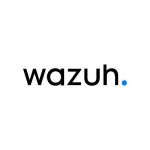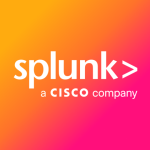What is our primary use case?
My client has a huge environment in Azure. They have around 30,000 resources spread across the globe. They also have a huge presence on-premises itself. So, for on-prem, they have a SIEM solution already in place. But for the cloud, they didn't have anything. So, basically, no visibility into any kind of attacks or any kind of logging or monitoring in the cloud. We could not scale up our on-prem counterpart for it due to various reasons of cost and how much resources it would take. Microsoft Sentinel seemed like a pretty good solution since it's cloud-native, it's hosted by Azure itself. So we went ahead with the solution.
How has it helped my organization?
Microsoft Sentinel has given us great visibility into our cloud workloads and cloud environment as a whole. And not just that, but even, in fact, with the MCAS and email-security solutions also. We get a lot of visibility into what kind of emails we are getting and how many of them are malicious versus legitimate. From a visibility and compatibility perspective, it's really a nice product to have as a SIEM solution for your cloud environment. In fact, we have integrated this with our AWS, as well. At this point in time, it's just one account, but we plan on expanding more. So all the logs from our AWS environment flow to the solution. Microsoft Sentinel performs the analytics and gives us the alert for that.
The comprehensiveness and coverage of multiple different solutions, on-prem solutions, and cloud solutions, are the two aspects, Microsoft Sentinel really has an edge over other products.
Visibility into threats is above average. Since I also went through some slides of Microsoft and they receive a lot of telemetry because of their Windows platform, because of Azure. What I saw in those slides is that they benefit from this telemetry and create a rich threat-intelligence, kind of a backend service, which supports Sentinel and literally enriches the detection capabilities for Microsoft Sentinel.
Correlation is something that helps us instead of looking at every single alert. So, if we get a phishing email and five users click on it, instead of going through five individual detections, it correlates all of that and presents it in one single incident correlating all these five events. So, in terms of that correlation, it is pretty good. In terms of responding to these alerts, I know there is some automation. There were multiple calls with Microsoft when we were setting up this solution. They showed us how we can do this and they gave us a demo, which was really nice to see the automation. But from the response point of view, we haven't enabled any automation as of now because we are still in the nascent stages of setting this up. We have done multiple integrations, but, still, there's a lot of ground to cover. So, the response is something we would look at last. I think the response side also has a lot of automation and correlation, but we haven't worked on that as of now.
The time to detect and time to respond has been reduced considerably. Detect, because the analytics that is done by Microsoft Sentinel is near real-time, and response is based on us. So, when we see the alert, we respond to it, and we wait on the teams to receive an answer. Previously, the SOC guys were doing this. It was really slow and, sometimes, proceeded at a snail's pace. With Microsoft Sentinel, at least one part of it got addressed, which was running these queries with the SIEM and getting to analyze multiple events to go onto a specific security incident. That time has been saved by Sentinel. I would say 20 to 30% of the time to respond and detect has been saved.
What is most valuable?
In terms of Microsoft Sentinel, I think a large part of it has been automated by Azure itself. From a customer point of view, all you have to do is just run some queries and get the data. In terms of connections or the connectors for multiple data sources or multiple log sources, it's very easy to just set it up, be it Azure-native services or something customized, like some connection with the on-prem servers or things like that, or even connections with the other cloud platforms, such as AWS. The connectors are really one thing I appreciate. I think it sets Microsoft Sentinel apart from other solutions. Apart from that, the analytics that it performs and the built-in queries that it has, are valuable. A lot of automation on part of Microsoft Sentinel is really commendable.
Microsoft Sentinel definitely helps prioritize threats across our enterprise. I think Microsoft Defender for Cloud would also come in when we talk about this because Microsoft Defender for Cloud and Microsoft Sentinel work in conjunction with each other. We can set it up that way so any alerts that are found in Microsoft Defender for Cloud are forwarded to Microsoft Sentinel. Then, the prioritization is set based on the standard criticality, high, medium, low and informational. So, from our sense, what we can do is, we can simply target the high incidents.
Another thing is that it very efficiently correlates all the events. So if multiple emails have been sent from a single email ID, which is supposed to be a phishing email, Sentinel identifies it, flags all the emails, and it can very beautifully track all of it from their console such as who clicked it, when did they click it, which ID was it, who received it. So, in terms of all that, correlation also helps us prioritize those events.
Prioritization is important. If we have a bunch of alerts and we started investigating some alerts that are not of that much value, some alerts would get ignored if the prioritization was not set correctly. So if it's a phishing attempt and, in another area, we find that there's a brute-force attack going on, we would first want to address the phishing attempt since, in my opinion, in my experience, the probability of getting a link clicked is high rather than a password getting compromised by a brute-force attack. So, in those terms, prioritization really helps us.
Microsoft Sentinel definitely enables us to ingest data from the entire ecosystem. Microsoft Sentinel has around 122 or 123 connectors. Although we haven't set up the solution for our whole ecosystem, be it on-prem, Azure Cloud, AWS cloud, or any other cloud for that matter, looking at the connectors, I feel like there's a whole lot of support, and possibly, we can cover our whole ecosystem, with some exceptions for some solutions. Exceptions are always there. From a coverage point of view, I think it's pretty good. We can cover at least 80 to 90% of our ecosystem. Obviously, it comes at a cost. So at that point in time, it could get very costly. That is one downside.
From the SOC point of view, everything depends on how good the data you are ingesting is and the amount of data you are ingesting. So, the more data we have, the better insights we would have into what activities are going on in our cloud environment, and in our on-prem environment. So it's very critical to have the right data ingested into things like Microsoft Sentinel. Otherwise, you could have a great solution but an ineffective solution in place if you don't have data ingestion configured in the right manner.
Investigations are something really remarkable. We can drill down right to the raw logs by running different queries and getting those on the console itself.
What needs improvement?
The number one area of improvement for Sentinel would be the cost.
At this point in time, I feel like, simply because we are a huge organization spread across the globe, we can afford it, but small and medium businesses cannot afford it. Maybe it's not meant for them? I don't know; that's a debatable topic. But even for organizations like ours, a problem that we face and for some of my other friends that I have talked to, it's a great solution, but we cannot deploy it everywhere because, frankly, we overrun our budget.
One thing that would really help or benefit would be the alerts that get thrown up. I've seen multiple alerts. For example, external file activity or external user activity. I open those alerts and there is absolutely no information in them. If there's external user activity, then who is that user, what is something that they are doing, how did Microsoft Sentinel detect this, or what were the analytics based on this outcome that it was a malicious activity or there was something anomalous or something like that? There is some particular type of alerts where a bit more data enrichment would help us.
The alerts get thrown out, and this is something we generally see with any kind of SIEM or any kind of other detection-based solution. For example, in an EDR solution or a vulnerability solution, the typical problem is alert fatigue. We get so many alerts that we start to see a large amount of them, and then we don't know where to start. Although here, we have the prioritization already shared by Microsoft Sentinel, so we have a starting point, but then it never ends. Perhaps tweaking and reducing the number of alerts that get thrown out, and enriching those alerts with more data would help. A lot of these alerts are just very normal things. They are not security incidents in their truest form, but it does take up our time just viewing those alerts. And sometimes, it also lacks a lot of information, like who did what, at exactly what time, and why did Microsoft Sentinel think that it was a malicious incident. That is one question I see a lot of times myself and don't get an answer for, like, "Okay, I get this a lot, but why do you think it's a security event?" So, enriching those alerts with more data might be a good area of improvement for Microsoft Sentinel.
The number of dashboards is something we complained a lot to Microsoft about, "You have great solutions, but you have a different console or a different dashboard for everything. So, as a person who is responding to these alerts, it really becomes overwhelming juggling between multiple different screens, dashboards, tabs, and windows." They have acknowledged this and they have mentioned to us that a lot of other customers made the same complaint and they're working on integrating these dashboards. So, for example, if you are using Microsoft Defender for Cloud, in one click you can reach a Microsoft Sentinel page wherein it would show you the raw logs. It sometimes gets overwhelming viewing the same alert on multiple different dashboards. In one sense, if I had to give an example, you might see an alert on Microsoft Sentinel, but it won't have much data to it. To drill down to the very specific raw data, you would have to go to some other console. You would have to go to the source of that event or detection, be it Microsoft Defender for Cloud, MDI, or MCAS. So in those terms, we have to sometimes juggle through all these dashboards and tabs of multiple solutions.
For how long have I used the solution?
I have been using the solution for eight months.
What do I think about the stability of the solution?
I think the solution is pretty stable. I didn't see any aberrations or anomalous behavior of Microsoft Sentinel. And that's the benefit of having a managed service. Downtime is quite less. Especially from providers like Microsoft. With Microsoft Sentinel, we didn't feel like there were any hiccups in the operations or any sort of problems we faced with the solution, as of now.
What do I think about the scalability of the solution?
This is something good about having a managed product, you don't have to worry about scaling. And this is exactly the problem we felt with our existing on-prem solution LogRhythm: the scaling was not possible because of the cost included. With Microsoft Sentinel, you have to pay extra, but you don't have to worry about setting up more servers, configuring them, patching them, doing all the maintenance, and doing additional administrative work. The solution is pretty scalable.
How are customer service and support?
Based on our interactions at the time of setup, after that, we didn't really require that much assistance from Microsoft. So, at the time of setup, they really helped us with insights and with decisions that we had to take based on our organization type and how we work. We have teams distributed globally across multiple time zones, and similarly, we have data and operations distributed all over the world. So this becomes a challenge when dealing with anything related to IT. So, Microsoft did really help us with setting it up. From a technical-assistance point of view, at the initial stages, it was a good experience.
How would you rate customer service and support?
Which solution did I use previously and why did I switch?
Our on-prem solution is LogRhythm and the reason we decided to add Microsoft Sentinel was scaling up of LogRhythm would have been a huge cost to us. Because right now, on-prem LogRhythm is running on multiple VMs, so their cost structure is very different. If you run the same setup on Azure, it's just an exorbitant amount of money. So that was one factor that we chose not to scale up LogRhythm to our cloud environment and looked for some other solution. The other reason we went for Microsoft Sentinel was that it is cloud-native. Since it's a managed service from Microsoft and from Azure themselves, not just time but also a lot of responsibility on our end gets transferred to the cloud provider of just setting up and maintaining that infrastructure, updating and patching all those systems, and doing that maintenance work. That overhead gets taken off our heads. That's why we were looking for a cloud-native solution. And hence, in our comparison, in our multiple rounds of discussion with internal stakeholders within the cybersecurity team, Microsoft Sentinel seemed like a perfect fit, so we went ahead with the solution.
How was the initial setup?
The initial setup is pretty straightforward. We didn't face many problems or complexity. We had everything running in a couple of weeks. The deployment was just me and one other person from the security team. She had a lot more experience with Microsoft 365 and the MCAS side of things. And I was more from an Azure infrastructure point of view, Defender for Cloud and the like.
What about the implementation team?
We started the deployment from scratch and we brought on Microsoft for assistance. We already have a huge presence in Azure, so we already had a Microsoft contact. We reached out to them. We mentioned that we want Microsoft Sentinel on board. We got in touch with their own cloud security and Microsoft Sentinel experts. They advised us, but I can say all the setup and all the operational side of things we did because if Microsoft did it then that would be handled by the consulting arm of Microsoft and that would be a full-fledged project, which would have its own cost. So Microsoft had to play a role as an advisor. We used to get about four IT calls to set it up. Whatever Microsoft recommended us to do, we went ahead with that.
First of all, we enabled everything that was free of cost. When you onboard Microsoft Sentinel, you pay some fee for the solution itself, and with that, you get some free connectors. So Azure AD sign-in and audit logs are one thing, Azure activity logs, and Microsoft Defender for Cloud are another. All these integrations don't cost anything extra over and above. So we started off with integrating all of that, and later on, slowly and steadily, we scaled up our integrations. There's still a lot of ground to cover. We aren't there yet with what we envisioned initially.
What was our ROI?
At this time I don't have an answer about a return on investment but it is something we have been contemplating inside our own team and we have been thinking of since we talked about how good a solution Microsoft Sentinel is. We cannot enable it across the organization, so we are thinking about creating a story of how much value, not in just terms of money but how much value in terms of security has the solution brought for us, and communicating this idea to other stakeholders in other teams and probably to the leadership, and maybe getting a little more budget for this project.
What's my experience with pricing, setup cost, and licensing?
Microsoft Sentinel is definitely costly. If we factor in the cost of other services, MCAS, MDI, and Microsoft Defender for Cloud, it gets seriously costly, to the extent that we cannot enable it across the organization. It simply overshoots the budget by a huge margin. When talking about the Microsoft Sentinel piece itself, let's say we have set up custom integrations and it does not cost us that much, it is definitely costly. If we talk about log retention, then it is even more costly. Comparing it to the other solutions, in fact, when we started off with the SIEM solutions for the cloud, we did do a comparison between which one would be the best: the classic Splunk, like we used in our on-prem, or maybe Microsoft Defender for Cloud. So, for our use case, Splunk was also a bit costly but less than Microsoft Sentinel. We went ahead with Microsoft Sentinel being a cloud-native platform on our side, the effort would be a lot less. Splunk would require to be set up from scratch. From a cost perspective, Microsoft Sentinel is quite costly.
Which other solutions did I evaluate?
We compared Splunk with Microsoft Sentinel.
What other advice do I have?
I give the solution an eight out of ten.
We have used and tested additional Microsoft solutions. At one point in time, we used Microsoft Defender for Identity, MDI solution, but it was for three to four months only. We discontinued it because it was more of an experiment and the guys from Microsoft gave us the license for that product for a limited time for testing. We were short on budgets, hence we could not leverage or we could not go ahead and purchase it. Another product was MCAS, Microsoft Cloud App Security. Primarily, we use Microsoft Sentinel. Microsoft Defender for Cloud is also used, but it has not been enabled on a lot of resources because it has a cost implication. So cost is a huge factor that we have to think about every time we do anything in security related to all these four products.
Wherever it is possible, wherever we have identified some critical resources and we had the budget, we enabled Microsoft Defender for Cloud and then integrated it with Microsoft Sentinel. Integration is super easy for anything which is an Azure service. It's mostly about doing a couple of clicks or maybe running a couple of commands. For Azure-native services, it's very easy, be it integrating the Azure AD logs or Microsoft Defender for Cloud or things like that. If I remember correctly, I integrated Microsoft Defender simply by flipping a toggle on the console. So it was easy to integrate Microsoft Defender for Cloud.
The coordination among all these tools is really marvelous. Although my role is not exactly that of an incident responder or from a SOC point of view, if I was a SOC person or an incident responder, it really takes the load off of my work to look around and to correlate that, and open four, five tabs and just juggling through them and trying to make a story. Microsoft Defender for Cloud, Microsoft Sentinel, and MCAS, all of them do it for us. So you just have a single pane of glass. Although these are four different products and you sometimes do have to juggle around, but not to that extent. Many times, it happens that your job gets done with just a single pane of glass.
I think the coverage is comprehensive from a protection point of view for all these four, or five products from Microsoft.
The bi-directional sync capabilities of Microsoft Defender is an option that we get at the time of integrating the solution. This is exactly what I mean by using the toggle button to integrate Microsoft Defender for Cloud with Microsoft Sentinel.
I would say the sync capabilities are both critical and a nice add-on to have. Even if it's not critical and there was no sync between Microsoft Defender for Cloud and Microsoft Sentinel, we would still be doing our job of looking at two multiple portals. But since Microsoft does it for us, then it's really good to have. It takes the load off our shoulders and we could do other tasks and possibly look at more alerts instead of juggling through these portals between Microsoft Defender for Cloud, Microsoft Sentinel, MCAS, and MDI.
Investigations are something really remarkable. We can drill down right to the raw logs by running different queries and getting those on the console itself.
In terms of response, I do not have that much experience in automating the responses or letting Azure handle it, because we feel like the automation here might go wrong and we might have to face another incident caused by some sort of misconfiguration. So, at this point in time, we respond manually to the alerts. We don't use many of the response capabilities of Microsoft Sentinel. I did have a look at what I think, these are called playbooks, which are based on LogicHub. They do seem very promising, but we haven't used those functionalities as of now.
If I had to rank the three capabilities in terms of comprehensiveness, at the top would be SOAR. I would put threat intelligence and UEBA second. I haven't used both of these capabilities that much. We haven't enabled UEBA in our environment. Threat intelligence is the default one. Again, this is something we haven't enabled on a custom basis or something add-on; it's the default one that Microsoft provides.
In regards to proactiveness, I don't feel like there is anything proactive about the solution. It's mostly reactive. The nature of the whole SIEM is reactive: you analyze the logs, you get some alerts, and then you react to those alerts. I think in terms of prediction, I don't see it like that. But in terms of using threat intelligence, I definitely think that it really adds value when, for example, there's something legitimate in the email, there's something malicious. But when it comes to the unknown, when you cannot determine if it's good or bad, it adds value there, its threat intelligence, by simply stating that. Just a couple of days back, we had an alert that said that "URL was clicked," and it wasn't able to determine the nature of the URL: Was it malicious? Was it bad? So it gave us a low or an informational alert. Threat intelligence helps us in those situations.
The solution has saved us time in two aspects. A tremendous amount of time is saved in terms of integration. Nowadays every organization across any sector you talk about has a lot of IT solutions and security solutions in place. You talk about network devices, VPNs, security devices, these collaboration services, et cetera, all of these generate a lot of data integrating and investing all of that data into SIEM is really critical for the SIEM to function properly. That is something that Microsoft Sentinel does quite well. And I see that they are always working on not just creating those integrations but also making them very easy to configure, from a customer point of view. So, those integrations are one thing that I really like about Microsoft Sentinel. The second is the correlation of these alerts across multiple of these integrations. So, integrations and correlations are two aspects that I really like about the solution. I would say the solution saved me around 50% of the time. Simply, it's less of running the queries on a standard SIEM solution and more of clicking on the dashboards. So the typing time gets taken off and the loading time of getting the results back, and doing this over and over again with a typical SIEM solution, that has been absorbed, by the solution. Microsoft Sentinel does it for us. Our time has been saved in that sense.
I would say that, since the solution saved us time, and time is money, in that sense, the solution has saved us money. On the other, hand the solution's cost is such that it might have balanced out. So, I can say it saved us money in one sense, but I don't think it's because of the solution, it's because of how the processes are set up in our firm. When we find some detections primarily from Microsoft Defender for Cloud, we share it with the team and we get to know that "XYZ resource is not in use anymore," and it probably gets deleted. So, in that sense, resource getting deleted, obviously, would stop incurring the money and the extra cost that we would have been paying. In that sense, our money is saved, but I wouldn't really put Microsoft Sentinel there because if there was any other solution that would also do the same, the resource would eventually get deleted.
Microsoft Sentinel runs on top of Log Analytics. And right now, we have it just hosted in the European region, but logs get ingested from all over the world, and the logs are of all types. Such as Microsoft Defender for Cloud, Azure AD sign-in logs, audit logs, Azure activity logs, and MCAS. We stopped using MDIs. We also have AWS. From AWS, there is a couple of log types. I think it's the CloudTrail, and events around S3 buckets and Kubernetes, although we don't use Kubernetes. That is all that is configured as of now with Microsoft Sentinel.
Four people in our organization use the solution. We have a dedicated SOC team, two guys are from the SOC team: one is me, and one is another person who has experience with Microsoft 365, and two people from the cybersecurity team.
I don't think there is any maintenance required. But there is overhead administration. So far, what I have experienced, it's just about integration. If you have to get started with the integration, then that's the overhead administrative effort on your head. Otherwise, it's not much of a problem. Everything is pretty smooth and automated with regard to maintenance.
There's one guy in our organization who for some reason, doesn't really like Microsoft and its products. He thinks that it's a way for them to catch us in a net and then upsell all their services to us. But I have a different, opposing view. I think, yes, they do have their own strategy of upselling and cross-selling all their products and solutions, but I think they are pretty good when working with them with those solutions, be it Azure as a whole cloud service, or just one part of it like Microsoft Sentinel. It takes off a lot of overhead, also, in terms of when you want some support, since it's a one-vendor-based solution, they would be much more helpful to support you and give you the right resolution in comparison to having three different products from three different vendors. What happens is, more often than not, they all start blaming each other, and then there's a blame game going on, and we, as a customer, have to suffer with whatever problem we are dealing with. So, I would go with having one vendor's solution, provided the vendor is not the kind of vendor that just sees you as a cash cow.
The only advice I would give to someone is that when you are evaluating the solution, if possible, you onboard people from Microsoft so they can help you and guide you. It's their product, they know how to best use it. So you would be in a better position right from the get-go, and it would also save a lot of time and effort in case you did something wrong or you chose a bad design decision, which might end up wasting a lot of time in the future. So, one piece of advice I would say is, simply to onboard Microsoft and it won't cost you extra. I don't think it would cost you extra. If you are already using any good Azure service or Azure itself, then that could be possible with the help of the account manager and the relationship that you have already with Microsoft.
Which deployment model are you using for this solution?
Public Cloud
If public cloud, private cloud, or hybrid cloud, which cloud provider do you use?
Microsoft Azure
Disclosure: My company has a business relationship with this vendor other than being a customer. MSSP














